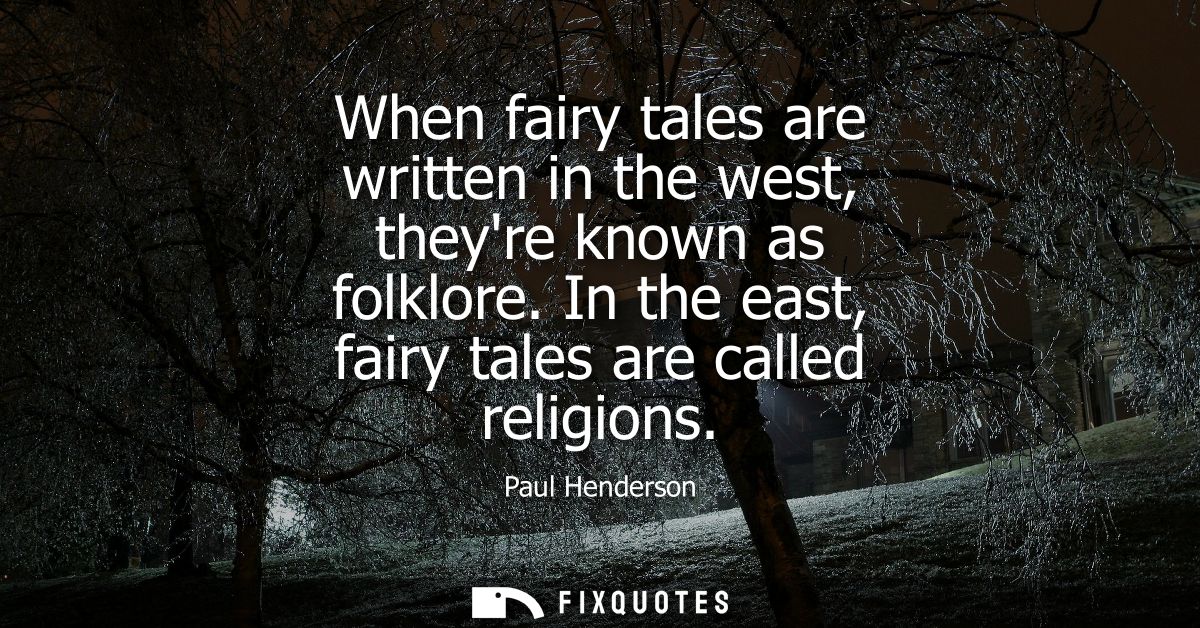"When fairy tales are written in the west, they're known as folklore. In the east, fairy tales are called religions"
About this Quote
Paul Henderson’s observation draws attention to the contrasting ways that societies interpret and categorize stories that explain the world. In Western cultures, imaginative narratives, those involving magical beings, extraordinary worlds, heroic quests, and profound moral lessons, are often classified as folklore or fairy tales. These stories are appreciated primarily for their entertainment value, cultural insights, or as moral fables for children. As time passes, they are distanced from factual truth and are relegated to the realm of myth or storytelling, never intended to be regarded as literal explanations for existence or humanity’s place in the universe.
By contrast, in many Eastern contexts, similarly fantastic narratives have historically evolved into the foundations of major living religions. Tales that might include supernatural beings, miracles, gods, or cosmic battles are interpreted quite differently; they become the sacred stories from which spiritual and ethical systems are derived. For millions, these tales aren’t just “stories,” but are instead revered as divine revelation or spiritual history, and lived accordingly. Religious texts like the Mahabharata, Ramayana, Buddhist Jatakas, or Daoist mythologies blend myth, philosophy, and historical tradition into guiding beliefs, serving both as cosmological explanation and moral compass.
Henderson’s comparison suggests that the distinction between “folklore” and “religion” is, to a large extent, a product of cultural framing and context. Stories considered fanciful or allegorical in one culture are held up as the literal or at least sacred truth in another. This highlights the subjectivity in how societies legitimize certain narratives over others, often based on tradition, collective identity, and prevailing worldviews. The quote also encourages reflection on the blurred boundary between myth and faith, and how stories shape collective realities, regardless of whether they’re called fairy tales or sacred scripture. Ultimately, it surfaces the idea that belief, rather than inherent truth, is what sets folklore apart from religion.
More details
About the Author

